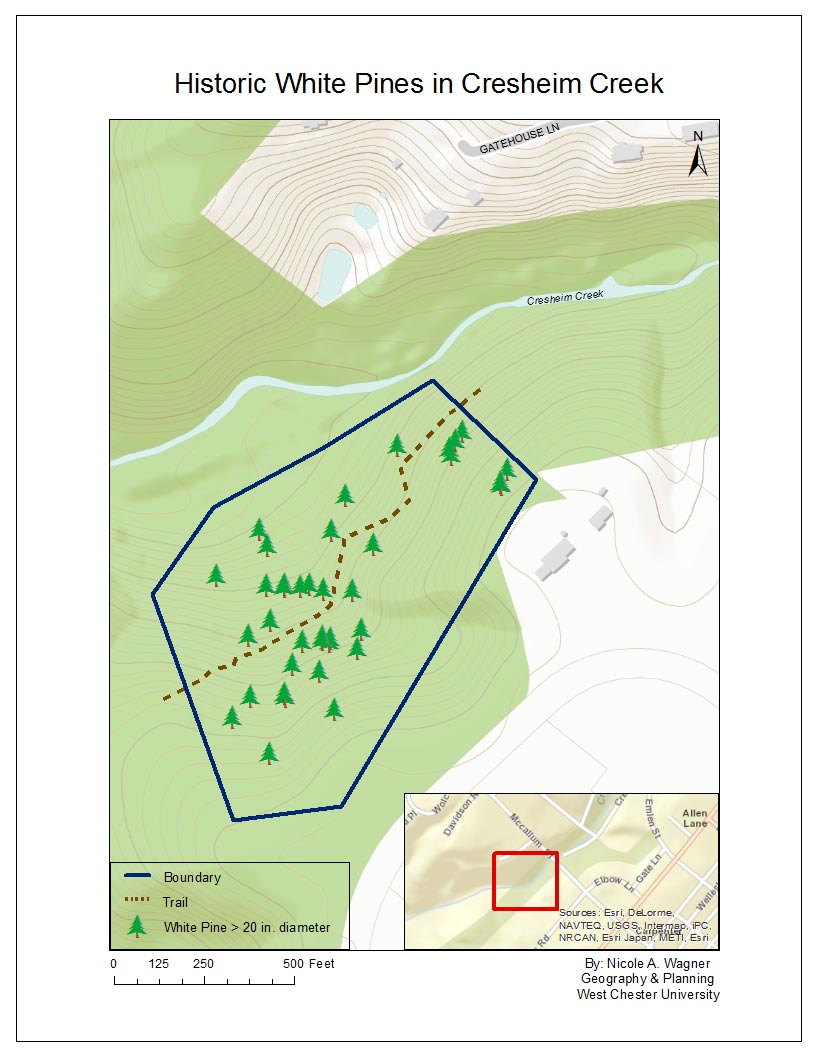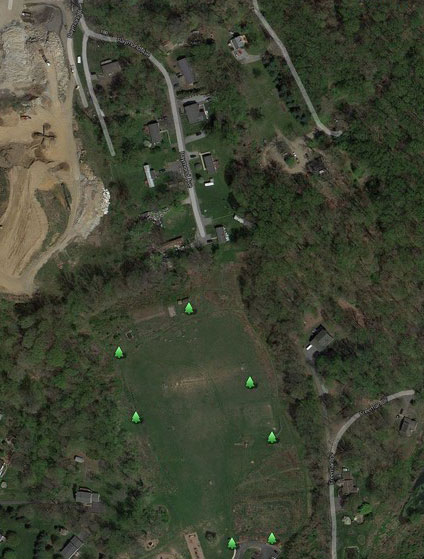
Dr. Joy A. Fritschle
Title: Professor
Location: 525 BPM Center
Email: JFritschle@wcupa.edu
Phone: 610-436-3396
Google Scholar: Dr. Joy A. Fritschle Profile
Education
- Ph.D., Geography, University of Wisconsin-Madison
- M.S., Geography, The University of Memphis
- B.A., Geography, Humboldt State University
Area of Expertise
Dr. Fritschle's fields of interest include biogeography, historical ecology, ecological restoration, and environmental conservation. Her research projects involve reconstructing historical landscapes using archival evidence and GIS analysis, ecological restoration of forests and woodlands, carbon and cost-benefit assessments of urban forests, and sustainable development through agriculture and forestry. She teaches courses in environmental geography, mapping, and field methods.
recent publications/journals
- Fritschle, J. 2021. An Introduction to Mapping. An Open-Educational Resource eTextbook.
- Fritschle, J. and the students of Planning Design (Studio B). 2020. Hibernia County Park Natural Resources Management Plan Project, ArcGIS Hub: https://hibernia-wcupagis.hub.arcgis.com/.
- Coutu, G., Fritschle, J., and the students of Planning Design (Studio B). 2018. Growing GeoTrees: An Urban Forestry Project, ArcGIS Story Map: https://arcg.is/18C4rK0.
- Ferguson, A., Fritschle, J.A., and Crossney, K. 2015. The National Wild and Scenic Rivers Act and Environmental Quality: A Case Study in the Red Clay Creek and White Clay Creek Watersheds. The Middle States Geographer 48: 58-68.
- Lubbe, S. and Fritschle, J.A. 2014. The Potential of Utility-Scale Solar and Wind Energy in Chester County, Pennsylvania. The Middle States Geographer 47: 79-91.
- Fritschle, J.A. and Dicce, R. 2013. Envisioning Sustainable Development in World Regions. Kendall-Hunt eTextbook.
- Fritschle, J. 2011. Identification of old-growth forest reference ecosystems using historic land surveys, Redwood National Park, California. Restoration Ecology 20(6): 679-687.
- Clark, A. and Fritschle, J.A. 2011. A GIS analysis of the pre-Columbian Chaco landscape: applying new tools to old problems. The Pennsylvania Geographer 49(2): 101-116.
- Fritschle, J. 2010. Forest Restoration. In: Encyclopedia of Geography, B. Warf (ed.), Thousand Oaks, CA: Sage Publications.
- Fritschle, J. 2009. Pre-EuroAmerican settlement forests in Redwood National Park, California, U.S.A.: a reconstruction using line summaries in historic land surveys. Landscape Ecology 24(6): 833-847.
- Fritschle, J. 2008. Reconstructing historic ecotones using the Public Land Survey: the lost prairies of Redwood National Park. Annals of the Association of American Geographers 98(1): 24-39.
Courses Taught at West Chester University
- GEO101 World Regional Geography
- GEO225 Introduction to Maps and Remote Sensing
- GEO334 Sustainable Living
- GEO336/536 Environmental Planning
- GEo 341/506 Landscape Ecology
- GEO585 Field Methods
- GEO402/415/600/610/615 Supervision of independent study, student internships, research projects, and theses in Environmental Geography
Samples of Supervised Student Projects in the Community
BOOKS
Fritschle, J.A. and Dicce, R. 2013. Envisioning Sustainable Development in World Regions. 1st edition. Kendall Hunt.

Summary:In world of seven billion people, we must confront a daunting challenge. How can seven billion of us inhabit the planet in a way that provides the best life for as many of us as possible? In other words, how can we sustain our personal, social, cultural, economic, and environmental well-being long into the future? This question is very real and being addressed by people, governments, corporations, and non-governmental organizations around the world. Indeed, we have achieved an unprecedented level of global cooperation today, and we are using our connectivity and interdependence to foster a global-scale project. This global project, and the key to how we can thrive with so many of us on the planet, are one and the same: Sustainable Development. What is especially exciting is that this effort is happening all over the planet right now.
This book addresses sustainable development in the twenty-first century in a way that is accessible to students in introductory geography and environmental studies, or to anyone interested in gaining a better understanding of what exactly is meant by sustainable development. The text surveys the fundamental conditions to achieving sustainable development on a global and regional scale, and reports on the progress of this global project to date. In the spirit of lessening its ecological footprint, the text is available from Kendall-Hunt exclusively as an e-book, which also allows for publication of its full-color maps and reduces its cost.




